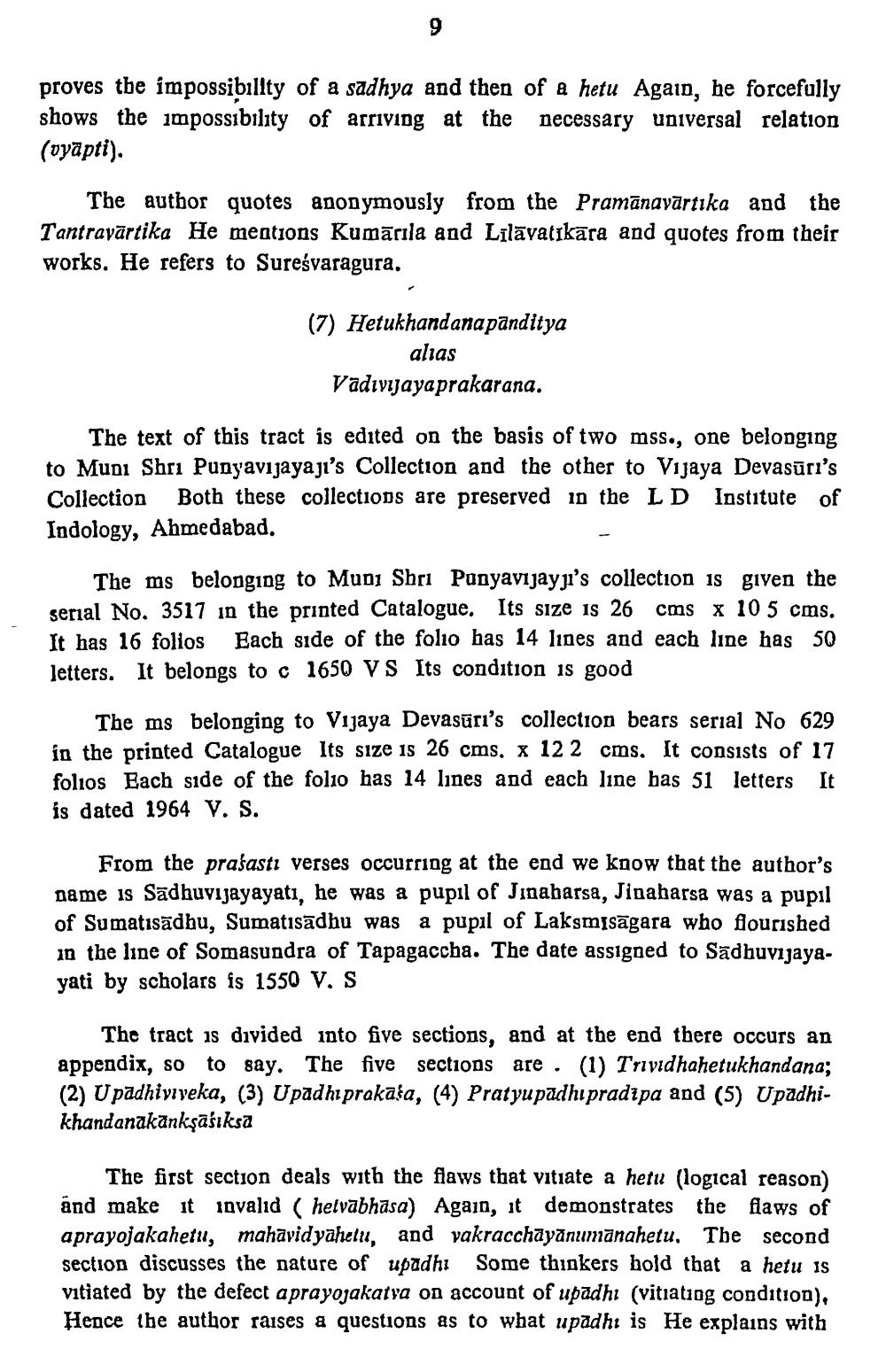________________
9
proves the impossibility of a sadhya and then of a hetu Again, he forcefully shows the impossibility of arriving at the
necessary universal relation
(vyapti).
The author quotes anonymously from the Pramanavārtika and the Tantravārtika He mentions Kumārila and Lilavatıkāra and quotes from their works. He refers to Sureśvaragura.
(7) Hetukhandanapanditya alias Vadivijayaprakarana.
The text of this tract is edited on the basis of two mss., one belonging to Muni Shri Punyavijayajı's Collection and the other to Vijaya Devasuri's Collection Both these collections are preserved in the LD Institute of Indology, Ahmedabad.
The ms belonging to Muni Shri Punyavijay's collection is given the serial No. 3517 in the printed Catalogue. Its size is 26 cms x 105 cms. It has 16 folios Each side of the folio has 14 lines and each line has 50 letters. It belongs to c 1650 VS Its condition is good
The ms belonging to Vijaya Devasuri's collection bears serial No 629 in the printed Catalogue Its size is 26 cms. x 122 cms. It consists of 17 folios Each side of the folio has 14 lines and each line has 51 letters It is dated 1964 V. S.
From the prasasti verses occurring at the end we know that the author's name is Sadhuvijayayatı, he was a pupil of Jinaharsa, Jinaharsa was a pupil of Sumatisādhu, Sumatisādhu was a pupil of Laksmisagara who flourished in the line of Somasundra of Tapagaccha. The date assigned to Sadhuvijayayati by scholars is 1550 V. S
The tract is divided into five sections, and at the end there occurs an appendix, so to say. The five sections are (1) Trividhahetukhandana; (2) Upadhiviveka, (3) Upadhiprakāša, (4) Pratyupadhipradipa and (5) Upadhikhandanakankşaśıksa
The first section deals with the flaws that vitiate a hetu (logical reason) and make it invalid ( hetvābhāsa) Again, it demonstrates the flaws of aprayojakahetu, mahavidyahetu, and vakracchāyānumānahetu. The second section discusses the nature of upadhi Some thinkers hold that a hetu is vitiated by the defect aprayojakatva on account of upadhi (vitiating condition), Hence the author raises a questions as to what upadhi is He explains with




